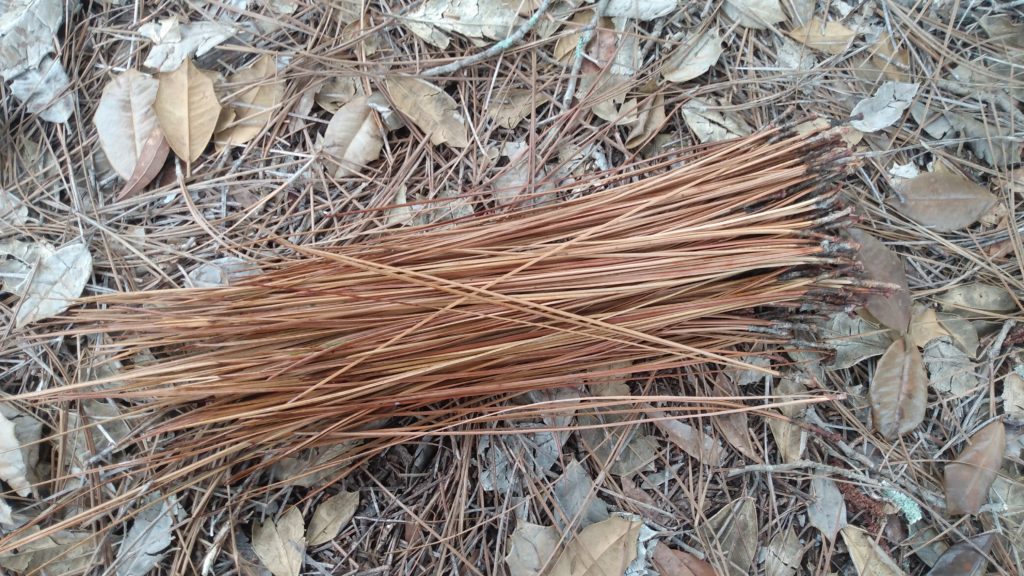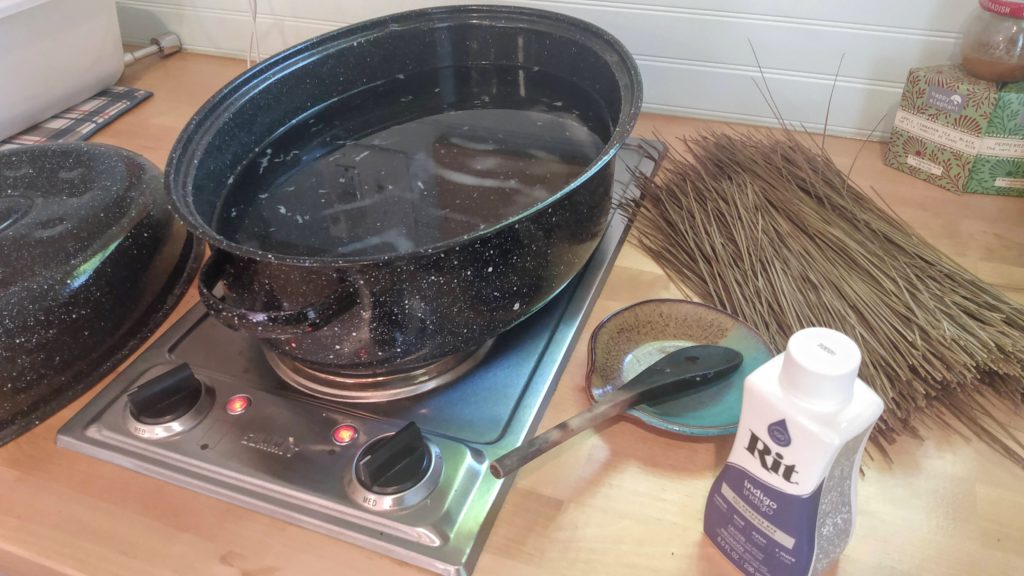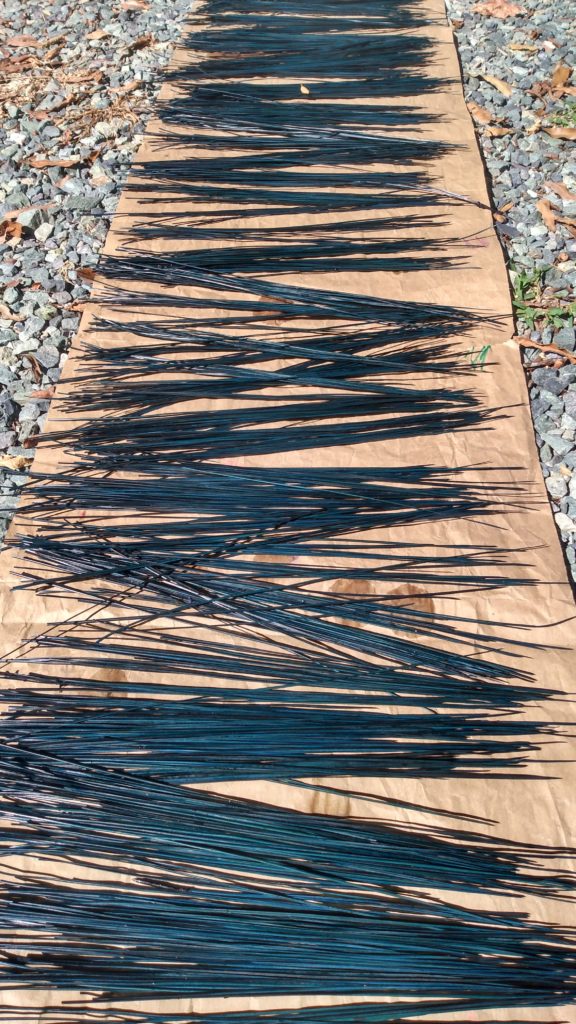A woman I know asked me if I could repair a seagrass basket she’d purchased years ago in the South Carolina Lowcountry. While the coiling technique used in Gullah tradition is familiar to me, I hadn’t worked with seagrass, bulrush or palmetto before. But it wasn’t just the materials that made me hesitate. To me, seagrass baskets are inseparable from a community that has endured centuries of oppression and the erosion of land, language and tradition. What bad karma might I conjure by messing with a genuine, Gullah-woven, seagrass basket?
I’ve often wondered about cultural appropriation as I’ve circled a pine needle coil around a geode or ceramic shape. That phrase – cultural appropriation – can be used to describe adopting, adapting, and/or coopting language, dress, design, foodways, music, dance, worship, and invention. And it means doing so in a way that ignores or demeans the ethnicity or culture of the originating source, or in a way that benefits the coopting party commercially or socially. Cultural appropriation is a growing concern among the Gullah people.
So what about pine needle basketry, a craft also attributed to native and African influences?
In her book, From Forest Floor to Finished Product, Judith Mallow tells us, “In 1917, a North Carolina Superintendent of Schools, William Hammel, credited Mrs. M. J. McAfee, of West Point, Georgia, with making the first coiled pine needle project. Mr. Hammel explained that Mrs. McAfee, in an effort to supply hats for her family during the Civil War, invented the technique of coiling pine needles and successfully made a pine needle hat for her grandfather.”
Apparently, this invention narrative was relatively common in the early 20th century. In her 1920 instructional book, Pine Needle Basketry, Linna Loehr Millikin writes, “In my experience as a teacher of the craft, no less than ten well-meaning persons have declared to me that they were the originators of pine needle baskets.” Instead, she suggests, if “we could learn a little of the Indian maid’s patience, it would result in our efforts being a lasting monument to the first ‘enterprising person’…” to coil a pine needle basket.
There is no doubt that the coiled basketry technique is essentially utilitarian, and examples of it can be found on nearly every continent. As with pottery and weaving, for example, some craft forms simply can’t be “owned” by any single culture, but the artistry infused into the form is in many cases unique to one’s culture, with unmistakable patterns, color, textures, and other decorative elements. The historical context of the form often is both unique and compelling, as in the case with seagrass baskets, which were originally made by enslaved Africans on rice plantations throughout the South.
Of course, no white person invented pine needle coiling, despite the Superintendent’s assertion. But is a white person like me who coils pine needle baskets practicing cultural appropriation? Must makers refrain from experimentation with a form that is not clearly native to their own culture?
Not necessarily. But as I experiment with the coiled form, I think that it is important that I respect what is culturally specific while enjoying the creative process.
For example, it’s important that I acknowledge, appreciate and honor the many craftspeople who came before me, and who taught others to coil pine needle baskets long before Mrs. McAfee and her grandfather’s hat. One way I practice appreciation is in the process of gathering pine needles. I pick them from the ground by hand rather than raking or using baled needles. I leave behind some very fine needles, and give back to the earth those I don’t use once I’ve cleaned and sorted them. This kind of mindfulness is a core principle to many native people, and I learn from it while honoring those who taught it to me.
I also strive for originality, especially if I plan to sell a basket or otherwise benefit reputationally from my craft. I coil and decorate my baskets in good faith without intentionally imitating designs and decorations used by native people, for example. In this way I seek to at once be guided by and contribute to the craft, rather than to coopt it.
It’s difficult to be mindful and original sometimes, but for me, that difficulty is all part of the meditative practice of coiling. So is staying grounded in the form itself, which while historically utilitarian, offers depth and possibility for whomever may come to it for the first time.


